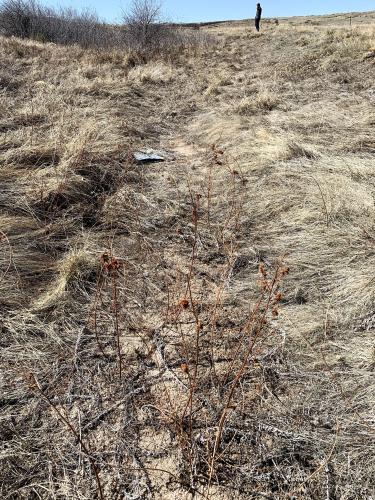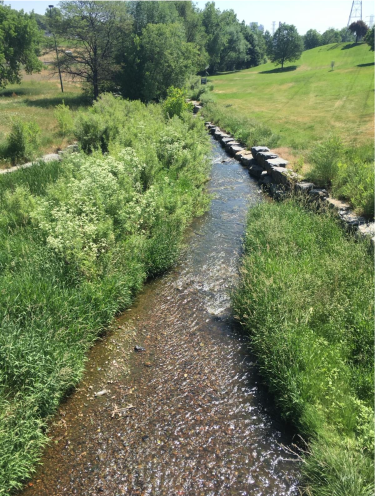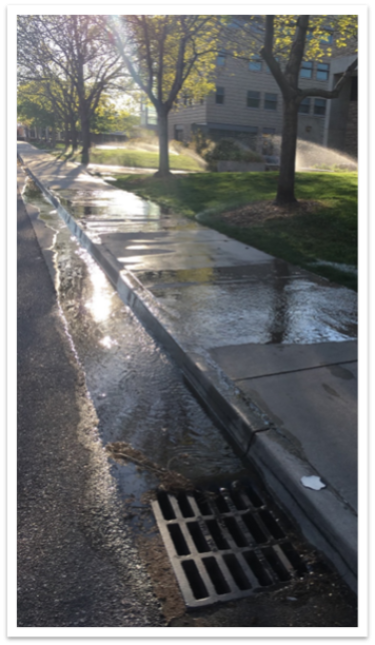Urbanization in Denver produces more streamflow because of contributions from excess irrigation, leaking pipes, and stormwater
Urban streams in semi-arid Denver have 2.5 times more streamflow than nearby grassland streams. Where is this extra streamflow coming from?

Dry West Stroh Gulch in a grassland watershed in Parker.

Flowing Lakewood Gulch in Denver.
We conducted a research study to identify the sources of this increased flow using a tracer and analysis of streamflow pattern, building on work by Noelle Fillo and Stacy Wilson.
Our tracer uses the fact that Denver’s tap water is imported from high elevations and is therefore isotopically distinct from local precipitation. Using hundreds of stream, tap, and precipitation samples from 2019-2022, we used this tracer to track how much streamflow in urban streams during dry weather conditions was from tap water compared to local rain. Tap water contributes to urban streams because of leaking water pipes or through excess lawn irrigation returning to the stream. Also called urban drool, excess lawn irrigation may flow along roads to urban streams, as well as take pathways underground, which are less visible but more common.

A picture of excess lawn irrigation entering a storm sewer system. Photo by Aditi Bhaskar.
Our results revealed that a major portion of urban stream water came from tap water (76% on average), mostly from lawn irrigation return flow. By analyzing the pattern of streamflow, we observed that tap water is a larger contributor to urban streamflow than increased stormflow during most months. The joint contributions of tap water and directly-connected impervious area driving increased stormwater dramatically change urban streamflow compared to nearby grassland areas.
For more information, the full article can be found here: Al Fatta A, Bhaskar AS (2025) Urbanization in Denver produces more streamflow because of contributions from excess irrigation, leaking pipes, and stormwater. PLOS Water 4(7): e0000299. https://doi.org/10.1371/journal.pwat.0000299 or contact the corresponding author at aditi.bhaskar@colorado.edu.

